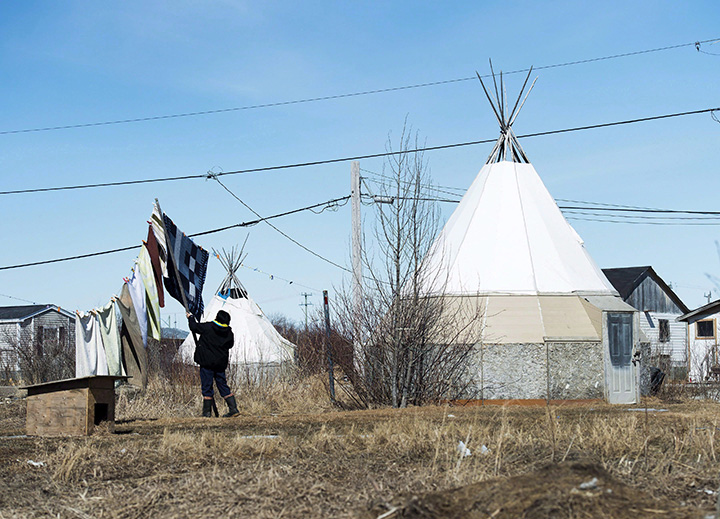First Nations families living in remote parts of northern Ontario are spending more than half of their income on food in order to meet basic nutritional needs, according to a new report by Food Secure Canada.

In its report released Monday, Food Secure Canada compared the cost of roughly 70 basic food items in three northern Ontario reserves — Moose Factory, Fort Albany and Attawapiskat to cities in southern Ontario.
READ MORE: What went wrong with Nutrition North?
Researchers found the average monthly cost for a family of four to purchase the items in the northern communities is more than $1,900 in Attawapiskat compared to $850 in Toronto.
“Food insecurity has reached crisis proportions and Nutrition North is an inadequate response, as outlined in this report,” said Joseph Leblanc, a board member with Food Secure Canada, in a statement.
Some of the high prices detailed in the report include:
- $9 for corn flakes in Moose Factory
- $20 for one pound of ground beef in Moose Factory
- Nearly $11 for a 2.5-kilogram bag of flour in Fort Albany
- Nearly $9 for 3 lbs. of apples in Moose Factory
The report criticized the federal government’s Nutrition North Canada program, which services Fort Albany and Attawapiskat by subsidizing the high cost of perishable, nutritious food.
READ MORE: Hunger pains: food prices hamper Nunavut
- Life in the forest: How Stanley Park’s longest resident survived a changing landscape
- ‘Love at first sight’: Snow leopard at Toronto Zoo pregnant for 1st time
- Carbon rebate labelling in bank deposits fuelling confusion, minister says
- Buzz kill? Gen Z less interested in coffee than older Canadians, survey shows
The authors of the report say lowering the costs of healthy food in northern communities is not enough to address food insecurity issues.
“We need more support for community projects where people living in food insecurity can be involved in a meaningful way in developing alternatives to the current system, including more local control and competition to the retailers, more support for traditional foods and better access to data to monitor prices relative to incomes,” Leblanc said.
High food prices in Northern Canada have received widespread attention in the past.
READ MORE: New campaign aims to shed light on the high cost of food in Canada’s north
Last year, a social media campaign highlighted the shocking prices of grocery items in Canada’s northern communities that included $26 for a jug of orange juice and more $83 for a flat of water.
A 2014 report from the auditor general found soaring grocery prices could be attributed to transportation costs, a lack of competition (many communities have just one grocery store), and unreliable weather.
Food Secure Canada calls for a broader comprehensive strategy that includes guaranteed minimum incomes to offset the higher cost of living in the north and having a healthy diet along with increased federal funding to support grassroots initiatives.
“We call on the federal and provincial governments to make access to nutritionally adequate and culturally appropriate food a basic human right in Canada,” the report says.




Comments